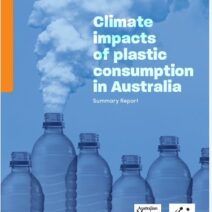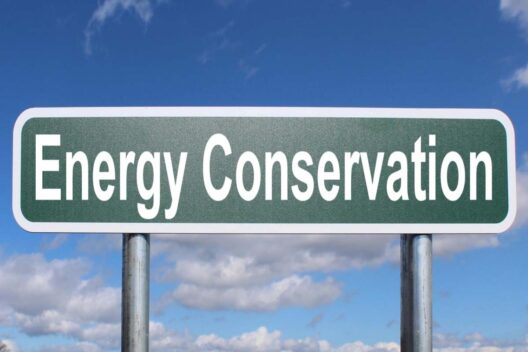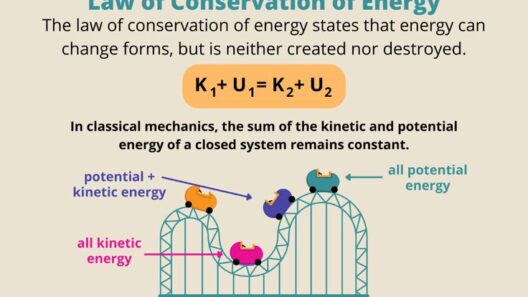In the intricate tapestry of global energy governance, a pivotal question arises: Does China actually conserve energy? This inquiry is not merely a passing fancy; it poses a formidable challenge that invites scrutiny of China’s multifaceted energy strategies. As the world’s most populous nation and a burgeoning economic powerhouse, China’s energy consumption habits not only influence its own environmental trajectory but also reverberate throughout the global landscape.
To grasp the essence of this question, one must navigate through the complex paradigms of energy conservation, efficiency measures, and the broader implications of China’s energy policies. At the heart of this discourse lies the juxtaposition between economic growth and environmental sustainability.
China’s economic ascent over the past few decades has catalyzed an unprecedented increase in energy demand. As urbanization and industrialization accelerated, so did the nation’s appetite for energy. Essentially, one might ponder: Can a country so deeply entrenched in rapid development realistically prioritize energy conservation? This is where the narrative becomes compelling and, at times, paradoxical.
In response to burgeoning energy needs, China has initiated a plethora of policies aimed at bolstering energy efficiency. The government has espoused ambitious goals, illustrating a pledge to decrease carbon intensity and promote cleaner energy sources. Initiatives such as the “13th Five-Year Plan” include stringent measures to curtail energy consumption per unit of GDP. However, the efficacy of these measures remains under scrutiny.
One might ask how these policies translate into tangible results. Numerous statistics illustrate a pronounced diversion in energy consumption trends over the years. For instance, while the country’s GDP has surged remarkably, energy consumption per capita presents a more nuanced picture. In recent years, there have been indications of decoupling economic growth from energy consumption, suggesting that conservation efforts yield some dividends. Yet, these achievements can easily be overshadowed by the sheer scale of industrial activity in sectors such as manufacturing and construction, which continue to heavily rely on fossil fuels.
Admittedly, China’s commitment to renewable energy presents a fascinating counter-narrative. The country is the world’s preeminent producer of solar panels and wind turbines, investing heavily in clean technology. Reports laud the rapid expansion of its renewable energy sector, which, according to projections, could account for a significant portion of the energy mix by 2030. But superficial achievements in renewable energy deployment should not obscure the complexities of energy conservation. In urban centers, the reliance on coal-fired power plants remains a significant concern, often leading to systemic inefficiencies and pollution.
Moreover, the interplay of governmental policies and local enforcement can engender further obstacles. While Beijing may establish strict energy conservation mandates, regional governments sometimes prioritize economic growth over compliance with these regulations, resulting in a fragmented approach to energy management. This discrepancy casts a shadow over the effectiveness of conservation strategies and raises questions about the actual energy conservation achieved on the ground.
Considering the global ramifications of China’s energy consumption trajectory, it’s essential to contextualize its energy strategies within international frameworks. China’s role in international climate agreements has evolved considerably, signaling an awareness of global responsibilities. The nation has pledged to peak carbon emissions before 2030 and achieve carbon neutrality by 2060. This ambitious commitment reflects a dedication to addressing climate change, but the real-world implementation of energy conservation practices remains a formidable challenge.
In the face of international scrutiny, China’s energy conservation narrative becomes an intricate dance between aspiration and reality. The sheer volume of energy consumed can often eclipse the more subtle advances made in efficiency. Could it be that while progress is evident, the velocity of industrial growth outstrips the gains made in conservation? Could the very measures intended to promote energy efficiency serve as mere façades, obscuring the challenges prevalent in implementation? Such inquiries challenge the simplistic dichotomy of success and failure.
Furthermore, the sociopolitical dynamics at play within China complicate the assessment of energy conservation efforts. The desire for an innovative, sustainable future often collides with the conservativeness of entrenched industries that benefit from the status quo. Would it not be prudent to foster a culture of conservation among citizens, promoting individual responsibility and awareness of energy usage? The empowerment of local communities in energy-related decisions might create a more profound and lasting impact.
To profoundly answer whether China conserves energy necessitates a synthesis of data-driven analysis and qualitative insights. One cannot overlook the strides made towards a more sustainable energy blueprint, yet the persistent reliance on fossil fuels raises critical concerns. Ultimately, creating a holistic approach involves not just instituting policies but fostering a culture of conservation that permeates daily life.
In this global context, resolving the dichotomy between growth and conservation becomes paramount. As China steps onto the world stage as a leader in renewable energy, the true measure of its commitment to energy conservation will be seen not in statistics alone but in an unwavering resolve to reshape its energy landscape for the betterment of both its populace and the planet. Hence, the question remains: does China conserve energy, or is the narrative merely a headline waiting for deeper exploration? The journey towards clarity continues, buoyed by the hope that collaborative efforts can shape a more sustainable future for all.






